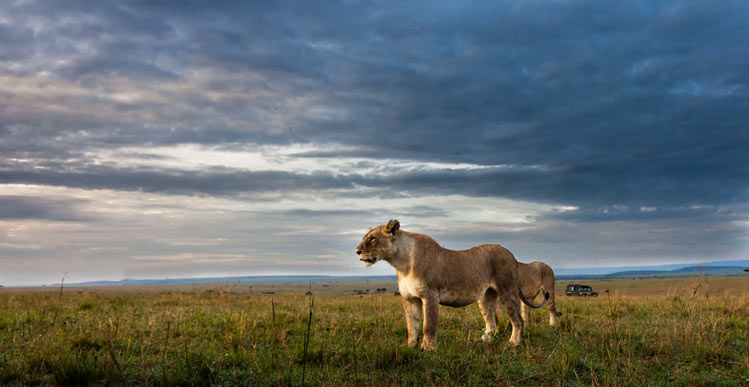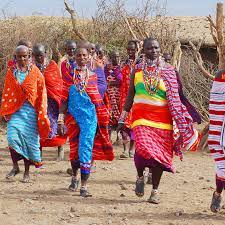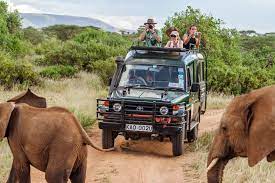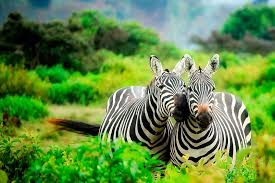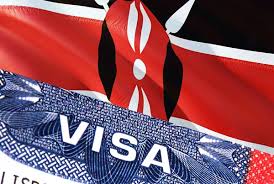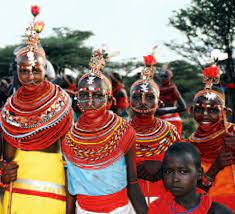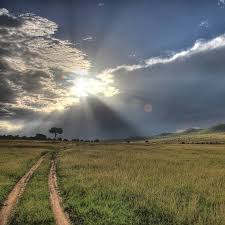Overview
Ruaha is now Tanzania’s largest national park and offers excellent wildlife viewing. It is particularly good for spotting predators, including very large prides of lion and the endangered wild dog. It also has outstanding wilderness appeal, with limited exclusive, luxury camps available.
Best Time to Visit
The heat is less intense in the Dry season (May to October), though plenty of dust is kicked up as you move around the park. This is also when the resident animals are more often glimpsed, unable to hide in the sun-withered bush. Safaris can get uncomfortably steamy in the wetter months, and some roads may be inaccessible at this time.
The middle and end of the Dry season (June to October) is the prime time for watching wildlife in Ruaha National Park. Animals are easier to spot because the bush thins out and wildlife concentrates around trusted water sources.
Best Time June to October
High Season June to October (Ruaha rarely experiences visitors crowds at any time)
Low Season April and May (Many lodges close)
Best Weather June to October (Rains are extremely uncommon)
Worst Weather November to March (Wet season)
May to October –Dry Season
- Wildlife viewing is easier since the bush thins out and animals gather around rivers and waterholes
- Skies are bright with almost no rain
- Malaria risk is at a minimum since the numbers of mosquitoes are less
- The heat is less overpowering, and it is not as humid
- Dust and dryness is common
- Many accommodations are closed in May
November to April –Wet Season
- The scenery is green and full
- Tourism is less during April and May which means fewer crowds and better rates
- The arrival of migrating birds means bird-watching is at its finest
- Roads could become impassable
- Wildlife viewing is not as good as during the middle and end of the Dry season
- Heat is high, and it becomes steamy and damp
- Many accommodations are closed in April
Getting There
Safaris to Ruaha usually start from Dar es Salaam, and your point of entry for the country will be Julius Nyerere International Airport (DAR). In most cases, your tour operator will pick you up from the airport and handle all further transportation and domestic flights. The drive to Ruaha from Dar es Salaam takes about 10 hours, and a lot of it is on a dusty, bumpy road. Many people doing this drive make a stopover at Mikumi NP. From Mikumi, the distance to Ruaha is about 320km/200mi, and the drive takes roughly five hours. The best way to get to Ruaha is by chartered or scheduled flight to the park’s airstrip. Flights leave from Dar es Salaam unless you are visiting the park as part of a southern circuit safari. In this case, flights will leave from the airstrip in Selous or Mikumi. Flights from Arusha town, the base for the northern safari circuit, are also available. Coastal Aviation also offers direct scheduled flights between Serengeti NP and Ruaha NP.
Airlines & Ticket Prices
Please check Skyscanner, or for multiple-destination flights check Expedia, to see which airlines can take you to Julius Nyerere International Airport (DAR), and what tickets would cost.
Domestic Flights
In most cases charter flights are booked by your tour operator as part of your tour package. Scheduled flights can be booked with a local carrier:
Coastal Aviation
Safari Air Link
Activities
The main activity is a Ruaha Safari daytime game drive. Night safaris are not permitted. Due to the high numbers of elephant in Ruaha some camps have chosen not to operate walking safaris. Those that do (Kwihala, Jongomero and Kigelia) have some superb guides and can offer amazing walking safaris. Jongomero is the only camp to operate fly camping trips with adventurous nights spent out under the stars.
With its seemingly endless list of places to explore and experiences to be had, it’s no secret that Tanzania is a top-notch country for travellers to visit. From the Serengeti plains to Zanzibar’s beaches, to Mount Kilimanjaro, to the Ngorongoro Crater and beyond, Tanzania is home to many bucket list destinations. However, it’s the lesser known, uncrowded attractions that really make Tanzania such a safari gem. Ruaha National Park is just one example of such an attraction.
Situated right in the heart of Tanzania, covering a unique transition area where the Eastern and Southern species of fauna and flora meet against a dramatic topographical background, Ruaha National Park is one of Tanzania’s best-kept secrets. Covering more than 20,000km², Ruaha is the largest park in the country, however, despite this, it remains largely off the radar for tourists and therefore provides a truly unhurried and uncrowded game viewing experience.
Uniqueness
Animals
- Diverse range of habitats and landscapes
- Huge variety of wildlife and birds, including large prides of lions, an elephant population numbering over 10 000, and approximately 500 bird species
- There are only a handful of camps within the vast area of the park, ensuring a uncrowded safari experience.
- The park is has been described as a ‘predator’s paradise’ as it is home to a healthy population of lions, leopards, cheetahs, African wild dogs and other smaller predators.
- It is also one of the only national parks in Tanzania where both the greater and lesser kudu co-exist.
What to do in Ruaha National Park:
- Go and a game drive and spot the diverse game within the park, including the Big Five.
- Enjoy excellent birdwatching opportunities, especially during the European winter season when the migratory birds are around.
- Sip on a ‘sundowner’ drink while watching the sunset over the horizon.
- Go on a guided walking safari and experience the park up-close and personal. Some camps even offer fly camping for an authentic and wild bush camping experience

